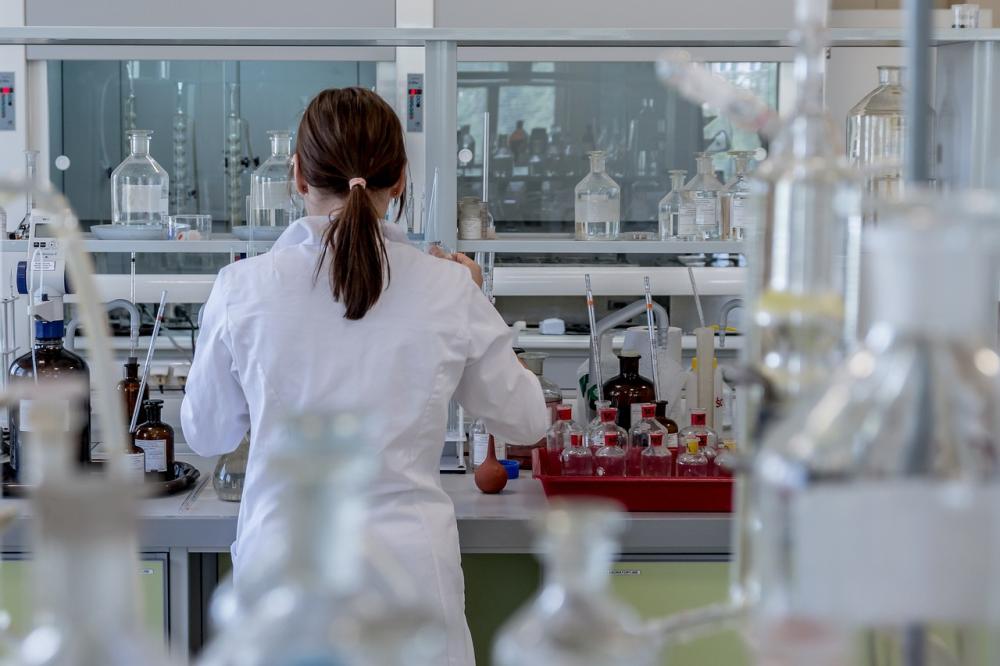CVM awards $66,000 for resident and graduate student research
June 27, 2024

Image by Michal Jarmoluk from Pixabay
The University of Minnesota College of Veterinary Medicine (CVM) announced over $66,000 in funding for seven new research projects to start in July 2024. The Resident and Graduate Student Research Grant program provides support for residents to conduct research and for graduate students to develop a new line of research related to their funded thesis work.
This year’s funding was distributed to seven individual projects through an annual competitive application process. Read about the 2024 funded projects below. Congratulations to the awardees!
Moumita Das (Mentor: Andres Perez), “Predicting domestic dog populations in kenya using ecological niche modeling: a step forward in canine rabies control”
This project aims to estimate the population size of domestic dogs, the primary reservoir of rabies in Kenya. By collaborating with local stakeholders and employing an analytical method known as Ecological Niche Modeling (ENM), we plan to map the distribution of dogs and ascertain environmental factors affecting their presence. Comprehending the population dynamics of domestic dogs is essential for executing successful rabies control efforts. By estimating dog numbers and identifying regions with inadequate vaccination coverage, we can target essential interventions where they are most needed. By employing ENM, we will analyze data on dog presence and environmental variables to predict where domestic dogs will likely be found. By discovering environmental factors, we can better understand the seasonal trends in dog populations. This information will provide valuable insights for policymakers and public health professionals to formulate targeted immunization campaigns and efficiently allocate resources.
Kimberly Demos-Davies (Mentor: Davis Seelig), “Comparison of diagnostic tests used for the diagnosis and classification of canine lymphoma”
To date, no study has evaluated the combined value of fine-needle-aspirate cytology and flow cytometry in the diagnosis and classification of canine nodal lymphoma as compared to the gold standard approach of histology and immunohistochemistry. We will evaluate the agreement between fine-needle-aspirate cytology + flow cytometry and histology + immunohistochemistry in the diagnosis and classification of canine lymphoma. Our objective is to determine the utility of fine-needle-aspirate cytology and flow cytometry in the diagnosis and classification of canine nodal lymphoma.
Emma Hilby (Mentor: Molly McCue), “Decoding the Path to Success: Unveiling how behavior and health drive assistance dog career outcome”
Assistance dogs (ADs, service dogs) are trained to mitigate the effects of a disability for their partners. While ADs are selectively bred for general attributes, such as ability to wear equipment, stress response, and stability in novel environments, it is unknown which of these general behaviors are associated with different career outcomes. Understanding which of these behaviors are tied to general categories of ADs (response vs alert ADs) and to specific careers (mobility assistance, hearing alert, etc) will guide organizations that raise ADs to place dogs into the best-fit careers more accurately and improve dog welfare by relocating puppies to organizations that are a better career fit.
Kaitlyn McEnaney (Co-investigators: Sara Wefel and Francois-Rene Bertin; Mentor: Alex Bianco), “The effect of sedation with detomidine and butorphanol and routine dental procedures on the endogenous ACTH of healthy horses”
The Equine Endocrinology Group, the foremost source of current recommendations regarding diagnosis and management of PPID, does not recommend measuring ACTH in horses who have recently undergone sedation with alpha-2 adrenergic agonists with or without butorphanol due to changes in ACTH unrelated to disease. However, it is unknown if sedation or dentistry affects ACTH measurement, and if so, how long before the horse can be tested. The objective of this study is to determine if there is a significant effect of sedation with detomidine and butorphanol and routine dental procedure on the endogenous ACTH of healthy adult horses. If there is a significant effect of the sedated dental procedure, a secondary objective will be to determine how long this effect lasts to enable better recommendations for when testing may be performed.
Marcello Melini (Co-investigator and mentor: Cesar Corzo), “Evaluation of manure pumping as a factor for porcine reproductive and respiratory syndrome (PRRS) virus' viremia changes”
Manure agitation and pumping increase the levels of gases (e.g. ammonia, hydrogen sulfide) in pig barns, which can cause inflammation that can influence the presence and behavior of pathogens such as porcine reproductive and respiratory syndrome (PRRS) virus. Although such possible influence is being explored for the shedding of this virus, there is no information on how the agitation/pumping event can influence the viremia behavior of the virus. The project aims to determine if viremia levels are increased by this activity, and the agreement between serum and oral fluids for RNA detection.
Manojkumar Narayanan (Mentor: Maxim Cheeran), “Glial cell activation by SARS-CoV-2 spike protein is dependent on its interaction with choroid plexus epithelium”
Our project aims to investigate the molecular mechanisms underlying neurological complications associated with COVID-19, focusing on the interaction of the SARS-CoV-2 spike protein with ACE2 receptors in the brain. Despite a lack of evidence of infectious virus in the brain, reports of neuroinflammation in patients, in congruence with our laboratory findings in a mouse model, suggest a role for the spike protein in the neuropathogenesis of COVID. By studying the interaction of the protein with ACE2 present on choroid plexus epithelial cells, we aim to elucidate how this interaction triggers inflammation in the brain, potentially informing targeted therapeutic interventions for neurological complications in COVID-19.
Sydney Phu (Mentor: Melanie Graham), “Characterizing renal injury in non-human primates using multiplex urinary cytokine and chemokine profiling for biomarker identification and enhanced diagnostic insight”
Current methods for assessing renal injury are limited by their invasiveness and lack of specificity, which hampers effective diagnosis and treatment of kidney injuries stemming from various causes such as infection, medication, chronic disease, or immune dysfunction. Urinary cytokines and chemokines, being direct products of the kidneys, hold promise as predictive biomarkers of renal health, offering insights into immune activity within the renal compartment. This study aims to leverage advanced multiplex techniques and established highly translational primate models of disease to characterize urine cytokine and chemokine profiles associated with ischemic, immune-mediated, and cytotoxic renal injuries, integrating them with clinical disease markers to develop more precise diagnostic and therapeutic strategies for kidney disease.


